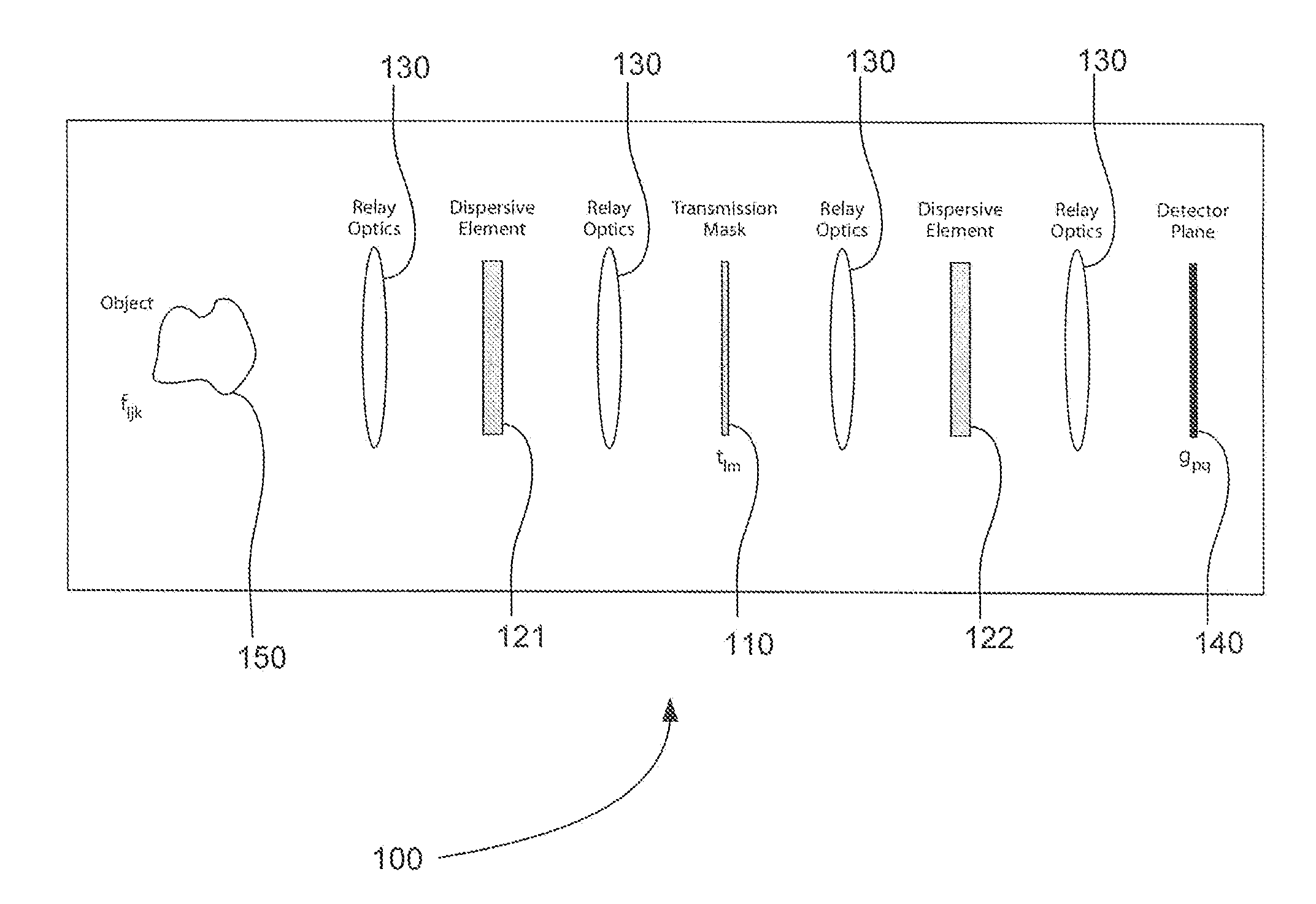Spatially-registered wavelength coding
a wavelength coding and wavelength technology, applied in the field of spatially registered wavelength coding, can solve the problems of incoherent source photon collection efficiency of incoherent sources, weak and spatially incoherent sources, and straightforward application of traditional spectroscopic techniques to spectral imaging
- Summary
- Abstract
- Description
- Claims
- Application Information
AI Technical Summary
Benefits of technology
Problems solved by technology
Method used
Image
Examples
Embodiment Construction
[0036] One embodiment of the present invention is system for using aperture coding techniques for implementing (spatially-varying) codes in the spectral structure of a source. The system includes a transmission mask and a pair of matched dispersive elements to produce a programmable spatio-spectral response.
[0037] An optical image is described by a spatial-spectral “datacube”ƒ(x,y,λ) describing the optical density at spatial position x,y and wavelength λ. Spectral imaging systems characterize the datacube or subsets thereof using interferometric, filter, or dispersive components.
[0038] Dispersive designs have the advantage of simple and robust physical implementation and programmable coding. In dispersive designs measurements take the general form
g(x,y)=∫t(x−λ,y)ƒ(x−λ,y,λ)dλ
where t(x,y) is a transmission mask or slit. In the case of computed spectral tomography, t(x,y)=1 and the direction of dispersion is rotated as a function of time. The common theme of these dispersive strate...
PUM
 Login to View More
Login to View More Abstract
Description
Claims
Application Information
 Login to View More
Login to View More - R&D
- Intellectual Property
- Life Sciences
- Materials
- Tech Scout
- Unparalleled Data Quality
- Higher Quality Content
- 60% Fewer Hallucinations
Browse by: Latest US Patents, China's latest patents, Technical Efficacy Thesaurus, Application Domain, Technology Topic, Popular Technical Reports.
© 2025 PatSnap. All rights reserved.Legal|Privacy policy|Modern Slavery Act Transparency Statement|Sitemap|About US| Contact US: help@patsnap.com



